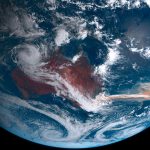 September 16, 2021 8:26 am
Published by Climate Extremes
September 16, 2021 8:26 am
Published by Climate Extremes
The Australian bushfires of the 2019/2020 summer had far-reaching effects. It has now been revealed in new research published in Nature that the smoke produced a phytoplankton bloom larger in area than all of Australia, thousands of kilometres away in the Southern Ocean between New Zealand and South America.
 July 14, 2021 2:23 pm
Published by Climate Extremes
July 14, 2021 2:23 pm
Published by Climate Extremes
This study looks at 6 months of under-ice zooplankton observations from the N-ICE2015 expedition from January to June 2015 in the Eurasian sector of the Arctic Ocean north of Svalbard.
 December 14, 2020 11:45 am
Published by Climate Extremes
December 14, 2020 11:45 am
Published by Climate Extremes
It has been remarkable how much we have achieved in this extraordinarily difficult year. Research coming out of the Teleconnections and Variability program over the past four months has strongly focused on how influences in one part of the world can have direct impacts on another.
 December 12, 2020 5:11 pm
Published by Climate Extremes
December 12, 2020 5:11 pm
Published by Climate Extremes
It has been remarkable how much we have achieved in this extraordinarily difficult year. Research coming out of the Teleconnections and Variability program over the past four months has strongly focused on how influences in one part of the world can have direct impacts on another.
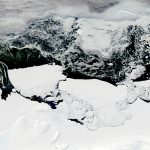 November 24, 2020 3:01 pm
Published by Climate Extremes
November 24, 2020 3:01 pm
Published by Climate Extremes
In this paper, the researchers investigated how a major glacier tongue break in the Mertz polynya in Antarctica impacted phytoplankton blooms. Larger phytoplankton blooms increase the amount of carbon that can be stored in the deep ocean.
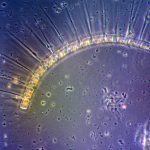 July 22, 2020 11:02 am
Published by Climate Extremes
July 22, 2020 11:02 am
Published by Climate Extremes
Tiny microbes at the base of the ocean food chain will be increasingly affected by marine heatwaves as the climate changes.
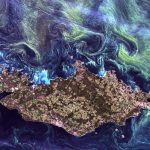 February 12, 2020 12:06 pm
Published by Climate Extremes
February 12, 2020 12:06 pm
Published by Climate Extremes
CLEX researchers evaluate the performance of satellite chlorophyll observations in the tropical Pacific Ocean and suggest algorithm improvements.
 May 6, 2019 3:19 pm
Published by Climate Extremes
May 6, 2019 3:19 pm
Published by Climate Extremes
In this project, the selected student will use a one-dimensional numerical ocean model to simulate and understand the physical and biogeochemical processes in the ocean near Australia. The student will utilise the long-term oceanographic measurements conducted at one of the National Reference Stations maintained by the Australian Integrated Marine Observing System (i.e., the Maria Island, the Port Hacking, and the Rottnest Island).
April 29, 2019 11:31 am
Published by Climate Extremes
Joan Llort Jordi (IMAS) Farewell Seminar: Decadal changes in Tasman Sea phytoplankton induced by atmospheric dust
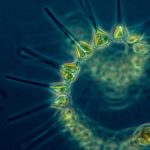 August 15, 2018 12:12 pm
Published by Climate Extremes
August 15, 2018 12:12 pm
Published by Climate Extremes
The study finds important regional consequences for precipitation and clouds formation if large changes in dimethyl-sulfide emissions were to occur. In a hypothetical case where all marine DMS emissions cease completely, we find the Earth would warm by approximately 0.5 degrees C over a ten-year period.









